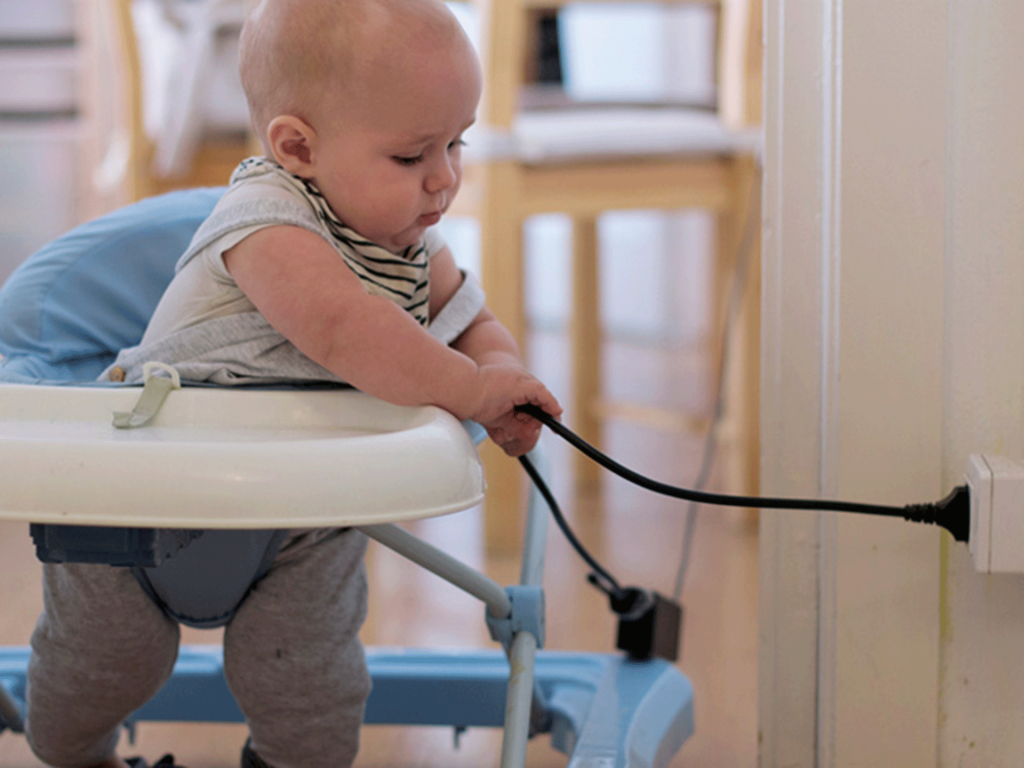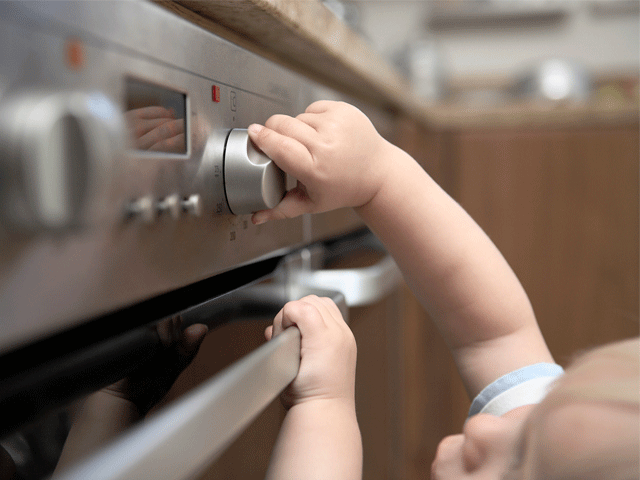Asphyxiation, falling, drowning and burning are some of the main events that can put the lives of the little ones at risk indoors

Every year, hundreds of children die or are hospitalized because of accidents or unintentional injuries. “Many of them happen in the domestic environment, especially with young children, who stay longer at home,” says pediatrician Renata Waksman.
Among babies who have not yet completed their first birthday and those between 1 and 2 years old, the accidents that kill the most are the aspirations of foreign objects such as toys and food. “If we look at the cases of emergency room care (not deaths), the falls are the majority,” says Renata Waksman. The good news is that most of these situations can be avoided with simple preventive measures. But when one of them happens, knowing how to act can be key to saving the little man’s life. Next, stay on top of what should be done in every type of domestic accident, attitudes that cannot be taken and how to keep your family away from it all.
Suffocation and asphyxiation
These are the main causes of deaths of children up to 2 years old. In general, this type of accident happens when babies ingest very large pieces of food or even objects such as pieces of toys or coins. “Suffocation can also be caused by plastic bags, ropes and cradle protectors,” warns pediatrician Alberto H.
To prevent this fatality, it is important to keep your child away from all these threats. This can be done, for example, by offering him foods suitable for his age, such as the papilla, and checking the age group indicated of all his toys.
What to do at the time of the accident
If, when swallowing a food or other item, the child is coughing, the orientation is to stay close and wait until it can expel the strange object alone. If this does not happen and the small one becomes pale, you need to call the rescue as soon as possible and look for someone who knows how to do the proper dechooning and clearance maneuvers of the airways. “Ideally, everyone who deals with children, not just parents, take a course called Basic Life Support to learn how to perform these maneuvers,” says Renata Waksman. If done incorrectly, they can put your child’s life at risk. So no trying on your own!
What should not be done
One of the attitudes that parents usually have in these moments is to put their hand inside the child’s mouth in an attempt to remove the object. But that could make the situation even worse. “Most of the time, the person ends up pushing the object further in,” Helito warns.
- Fall
There’s another fairly common domestic accident there – and don’t think it only happens to the grown-ups. “From 4 months, the baby can already roll, but many parents don’t know that ability. So there are cases where the child falls out of bed or the changer,” exemplifies the pediatrician at the Children’s Institute.
To stay away from it, there’s no way: you always have to keep an eye on the little ones. At home, make sure that all windows are locked or have protective screens or grilles; block access to stairs and remove carpets or opt for non-slip models.
What to do at the time of the accident
“First, hold the child until she stops crying and notices different symptoms than usual,” says Einstein’s pediatrician. Among them are loss of consciousness, pallor, vomiting, prolonged crying, changes in behavior (excessive drowsiness or agitation) and pain in the neck or back. “If the child is unconscious, it is not advisable to remove it from the site,” renata warns. Then it’s best to call for help and make sure she’s breathing. If not, resuscitation maneuvers must be applied – as long as there is someone able to do so.
What should not be done
It takes a while to take him to the hospital or call an ambulance.
- Drowning
Don’t think that this type of accident happens only at sea or in the pool – buckets, toilets and bathtubs are also a danger! To prevent drowning, in addition to supervising children (including older ones) when they are close to any of these locations, instruct them to respect ban plates on beaches, not to play pushing each other in the water or pretend you’re drowning. At home, keep the buckets empty and the bathrooms closed.
What to do at the time of the accident
Remove the child as soon as possible before the site and leave it lying down. “It is important to keep it warm, because hypothermia, which is low temperature, aggravates the symptoms of drowning,” alberto helito says. And call for help immediately.
What should not be done
If you have not received proper training, do not try to do maneuvers such as mouth-to-mouth breathing or chest compression. “All this has application if done by someone who knows the techniques. Otherwise, the person will only waste time asking for help,” helito says.
- Burns
They can be caused by fire, liquids or hot foods and even electricity. In the first two cases, the best way to prevent is to keep the child away from places like the kitchen, where most of these accidents happen. Another measure is to avoid the use of flammable products, such as alcohol.

Regarding electric burn, prevention can be done, for example, by replacing bare wiring, protecting the sockets and not allowing small ones to handle appliances such as hair dryers.
What to do at the time of the accident
In the burn with fire, the orientation is to roll the child on the ground to try to put out the flames and, as soon as it is controlled, wash with water and take to the hospital. In the case of scalding burn, while seeking help from a health professional, wash the area with plenty of running water.
In electric burn frames, the situation is more delicate. “The current runs through a larger area of the child’s body and can even affect internal organs,” warns Alberto Helito. Therefore, the first step is to turn off the switch from the key and then move the victim away from the electric current. “The ideal is not to touch her, because you can take a shock too. Do this with some insulating material, like a broomstick,” says the pediatrician. Then call for help and make sure that the child is breathing – if not, start resuscitation maneuvers or look for someone who is able to do them.
What should not be done
Delay in asking for help or using homemade techniques such as applying toothpaste, coffee or butter in the burned area. “None of this is useful,” Helito says. Treatment should only be done by a specialist, with the necessary knowledge and hygiene.
- Intoxication
Often, the little ones are dedicated to exploring new territories in the house and, when faced with objects never before identified, put them in their mouths without thinking. Intoxications usually happen at times preceding meals and when the family routine is altered, i.e. during the holidays or changing. Among the main villains are medicines, cleaning and toiletries and even certain plants.
To prevent such accidents, for example, keep products out of sight and reach of children; keep them in their original packaging; and give preference to packaging with safety covers, more difficult to open.
Another tip is not to take medicine in front of children, they may think it’s something common.
What to do at the time of the accident
The first thing that should be done is to call to call for help and describe what was ingested, at what amount and the time this happened. While help is not enough, prevent the child from jumping or getting too agitated. “The child standing favors this toxic to descend faster,” explains the pediatrician.
What should not be done
If the child has swallowed a remedy or a product, do not give water, milk or any other liquid, as this will cause the toxic substance to be absorbed faster. The same goes for vomiting: in these cases, never encourage the child to put what he ingested out. Besides, don’t leave the child alone.
Disclaimer: This post may have affiliate links.


